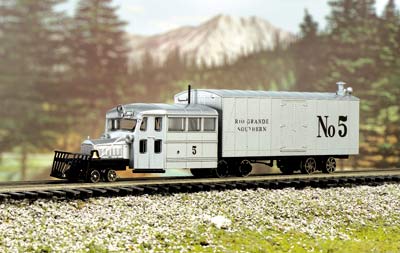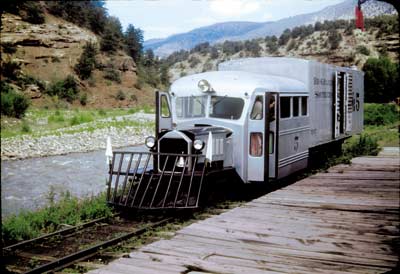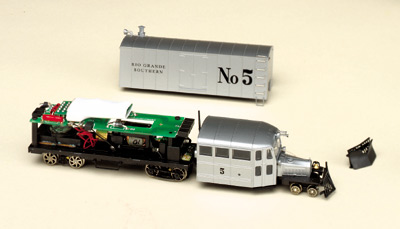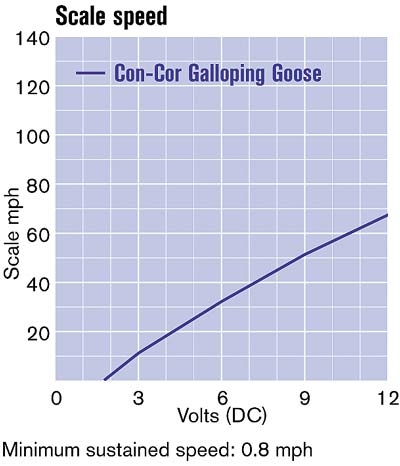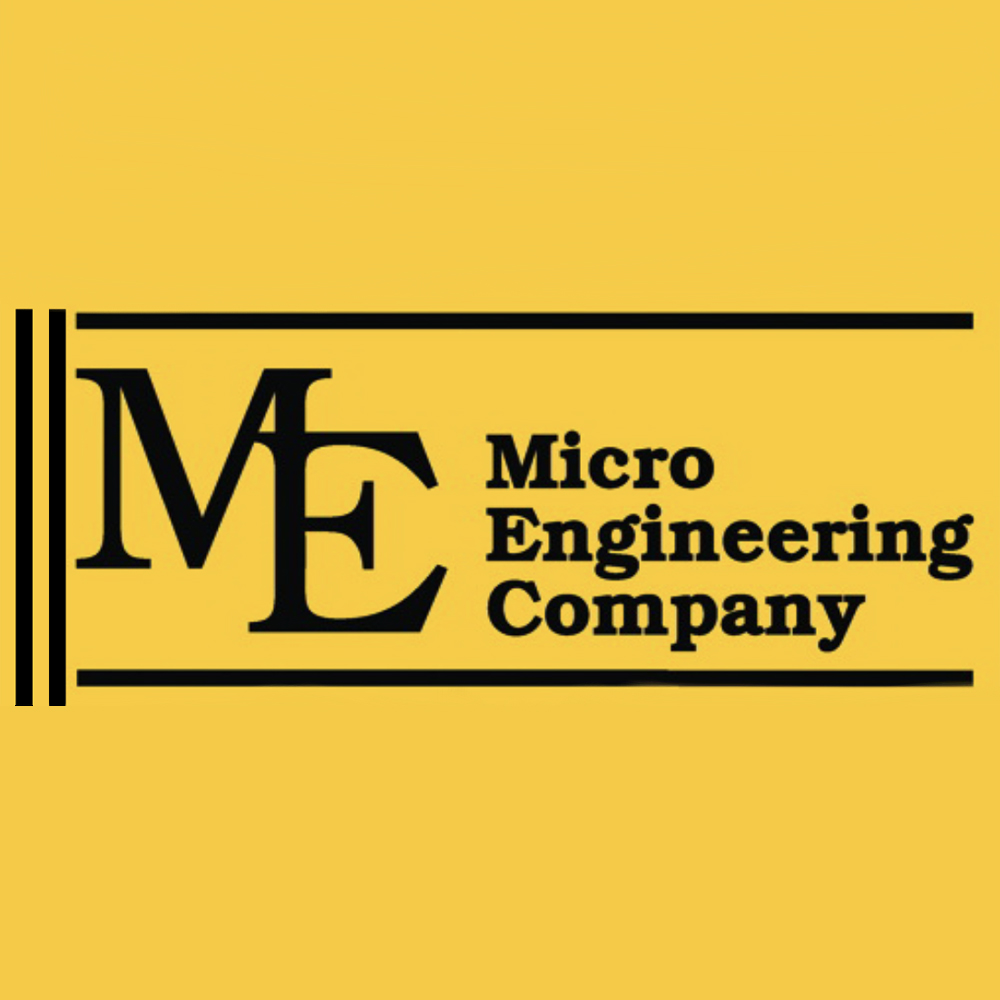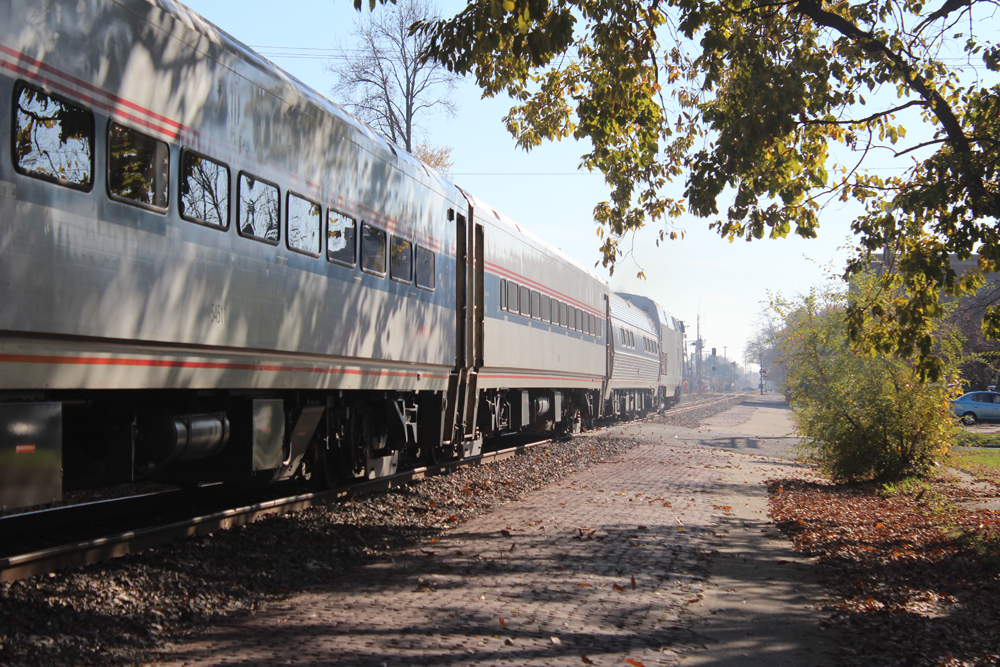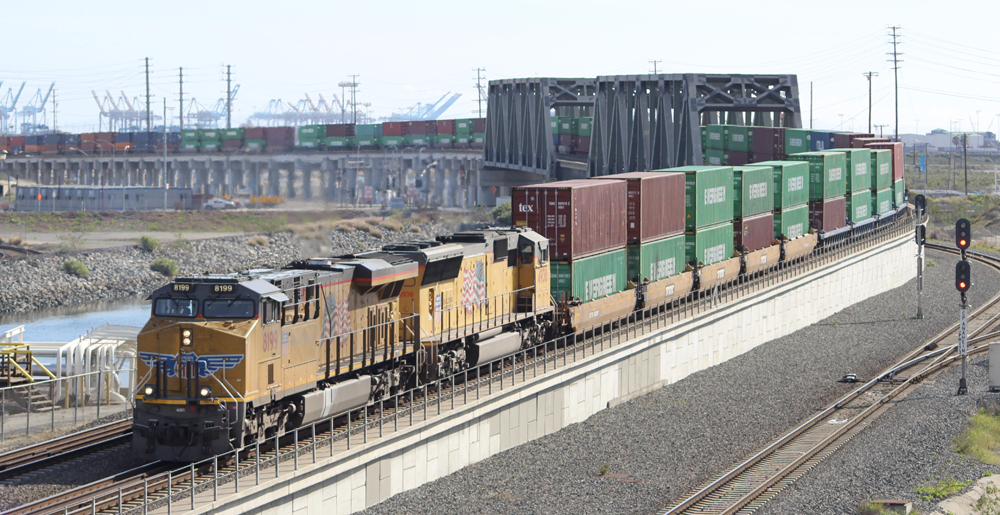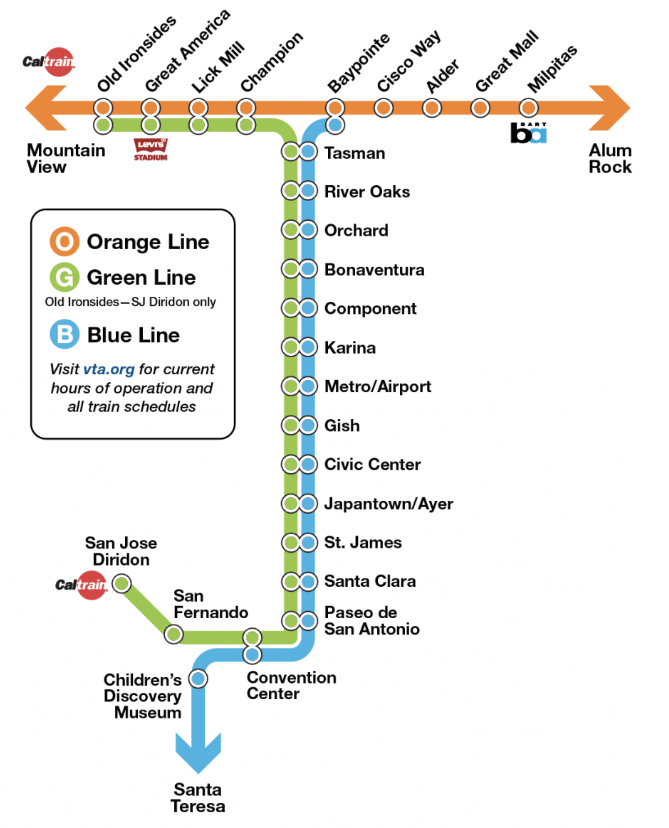Goose no. 5 was built in the Rio Grande Southern shops in 1933. It was originally made from Pierce-Arrow automobile parts and looked quite different. Then in 1946 the Pierce-Arrow body was replaced with a Wayne bus body and was re-engined. This Cor-Cor model represents the prototype’s appearance from 1946 to 1950. Motors 3, 4, and 5 all went through the same rebuilding program, so you could have all three Geese running on a Rio Grande Southern layout and be prototypically correct. In 1950 the freight car was converted for use in excursion passenger service. Large windows were cut in the sides and seats, heating, and a toilet were added inside. Prototype no. 5 can be seen today in Delores, Colo. It has been restored and occasionally operates on the Cumbres & Toltec Scenic RR and the Durango & Silverton narrow gauge tourist railroads. The origins of the “Galloping Goose” nickname are obscure, but narrow gauge fans like to think it’s because of the way these motor cars waddled along on the rough narrow gauge track.
Construction. The model consists of nicely detailed plastic bus and freight car bodies on metal frames. Power is provided by a five-pole, open- frame, skew-wound motor with a flywheel. The cowcatcher can be replaced with the snowplow provided for winter running.
While the top speed of the model is high, its mid-range control is very good, and that’s where you’ll want to be operating. The prototype waddled along at speeds in the 20-30 mph range. Slow- speed running is excellent. The model Goose will creep along at less than 1 scale mph! The model dimensions match drawings published in the January/February 1999 issue of the Narrow Gauge & Shortline Gazette [available from the Gazette by calling 800-545-4102], but the roof arch is slightly higher. The drawings also show the passenger seating and the side windows cut into the freight body for excursion service.
If you’ll compare the headlight placement on the model with those in the 1946 prototype photo, you’ll notice they’re different. This isn’t a mistake. Later photos show that the RGS moved the headlights back to the locations shown on the model – directly below the windshield. One minor discrepancy is that the hood top and radiator should be black.
Operation. We tested a model that comes with a DCC sound decoder. At start-up you hear the engine cranking, it catches, revs up, and then dies. The cranking sound is heard again; this time the engine fires up and keeps running. It’s fun to hear this sequence, so we’ve reproduced it on our Web site at modelrailroader.com. What you’re hearing is the real thing, as SoundTraxx recorded Goose no. 5 in action on the Durango & Silverton RR. The engine sound, bell, and horn are realistic and surprisingly loud. The only support literature that comes with the model is an exploded-view drawing and parts list. Some additional information can be found on the Con-Cor Web site, but here’s what you’ll need to know to operate the model: DCC function key F1 operates the bell, F2 the horn, F0 the lights, and F8 turns the engine sound on and off.
If you want to run on conventional DC power, unplug the sound decoder and replace it with the jumper plug supplied. To get to the decoder, remove the freight body by inserting a small screwdriver blade in one of the front slots and gently prying outward to release it.
The HOn3 model comes in the proper Rio Grande Southern paint scheme as well as undecorated and in a fictitious version lettered for the Denver & Rio Grande Western.
Con-Cor also offers this Goose with HO standard gauge trucks. While there’s no prototype, this model would make an interesting addition to a short line set in the 1940s through the 1960s. One of these motor cars could have been a cost-saving solution there too. This is a great model that raises the bar for HOn3 performance.
Price: $349.88, with DCC sound decoder;
$169.98, DCC ready; standard gauge versions available
at the same prices
Manufacturer:
Con-Cor International
8101 East Research Ct.
Tucson, AZ 85710
http://all-railroads.com
Description:
Plastic and metal motor car
Road names:
HOn3 models: Rio Grande
Southern, Denver & Rio Grande
Western, and undecorated
(unlettered silver)
HO standard gauge: Rio Grande Southern; Atchison, Topeka & Santa Fe; Denver & Rio Grande Western; Great Northern
Maintenance-of-way: New York Central; Pennsylvania RR; Southern Pacific; Union Pacific; and undecorated (unlettered silver)
Features:
Cast-metal chassis
DCC version includes factory-installed SoundTraxx sound decoder and speaker
DC version includes DCC receptacle
Directional constant lighting
Five-pole, skew-wound motor with flywheel
Minimum radius: 15″
Properly gauged RP-25 wheelsets
Styrene body
Speeds on DCC, straight track:
Scale mph
0.8
40.0
77.0
DCC throttle setting
minimum
midrange
maximum





